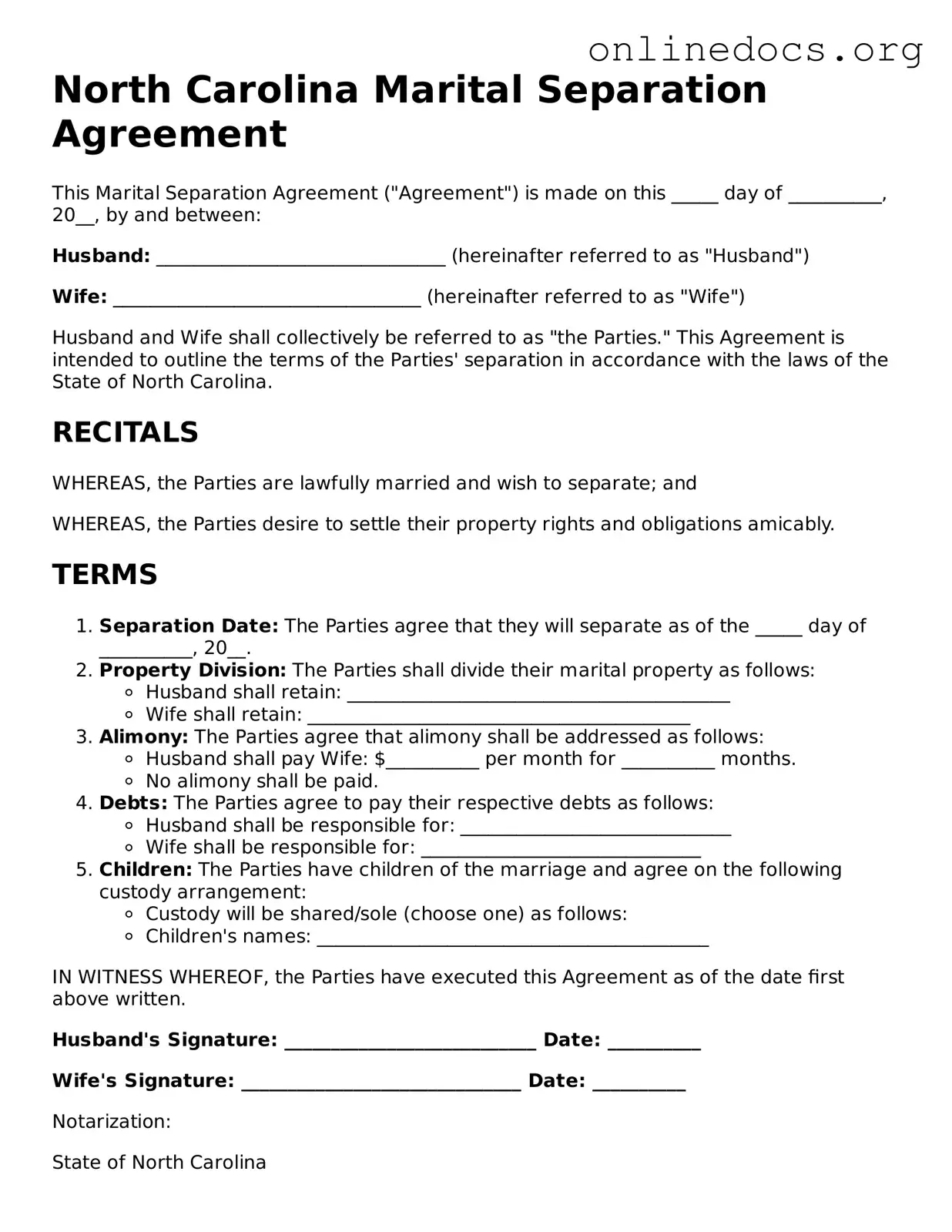The North Carolina Marital Separation Agreement is similar to a Divorce Settlement Agreement. Both documents outline the terms of how a couple will divide their assets, debts, and responsibilities. While a Marital Separation Agreement is used when a couple is living separately but not yet divorced, a Divorce Settlement Agreement comes into play once the divorce process has begun. Both agreements aim to provide clarity and reduce conflict during a significant life change.
Another document that resembles the Marital Separation Agreement is the Child Custody Agreement. This document specifically addresses the custody arrangements for children involved in the separation. Like the Marital Separation Agreement, it aims to protect the interests of all parties, especially the children. Both agreements can help parents outline their responsibilities and rights, ensuring a smoother transition for the family.
The Marital Separation Agreement also shares similarities with a Property Settlement Agreement. This document focuses on how a couple will divide their property and debts upon separation or divorce. Both agreements serve to clarify ownership and financial responsibilities, helping to prevent disputes in the future. They provide a framework for how assets will be handled during and after the separation process.
Understanding the nuances of various separation agreements is essential, and for those navigating their rights and responsibilities, it’s important to have access to the correct legal documents. For instance, if you're facing eviction issues, you may need to acquire a Notice to Quit form. This legal resource can be found at californiapdfforms.com/notice-to-quit-form/, which outlines the necessary steps landlords must follow when requesting a tenant to vacate their premises.
A Pre-Nuptial Agreement is another document that has some similarities with the Marital Separation Agreement. Although a Pre-Nuptial Agreement is created before marriage, it can outline how assets will be divided in the event of a separation or divorce. Both documents aim to protect individual interests and set clear expectations regarding financial matters, albeit at different stages of a relationship.
The Separation Agreement in other states also resembles the North Carolina Marital Separation Agreement. While the specific laws and requirements may differ, the purpose remains the same: to outline the terms of separation. This document often includes provisions for child custody, support, and division of property, similar to what is found in the North Carolina version.
Finally, the Cohabitation Agreement can be compared to the Marital Separation Agreement. This document is used by couples who live together but are not married. It outlines the rights and responsibilities of each partner regarding property and finances. Both agreements aim to provide clarity and protect the interests of individuals during a significant change in their living situation, whether through separation or cohabitation.
